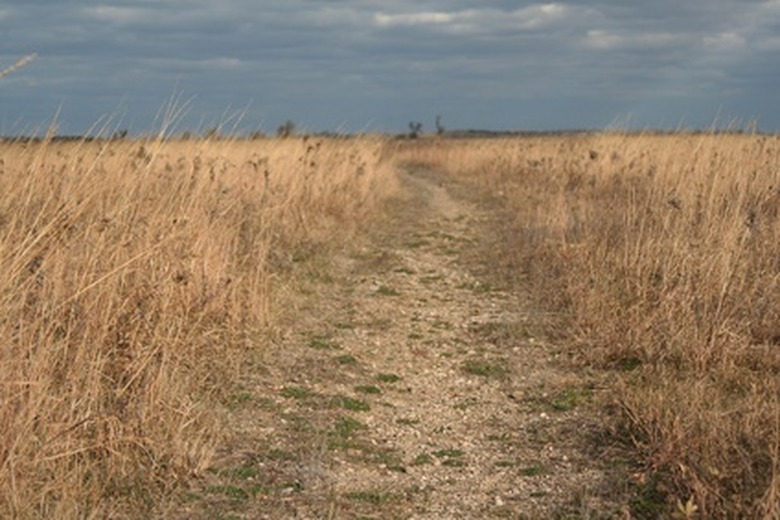Types Of Prairie Grass
When the pioneers first headed west across the Great Plains in the 19th century, tall grass prairies covered approximately one-third of America. More than 150 grass species thrive on the prairies, according to Fermilab's Flora and Fauna Exhibit. Many of those prairie grasses have subtle colors, graceful forms and interesting textures that make them popular ornamental additions to contemporary home gardens and landscapes.
Big Bluestem
Big bluestem (Andropogon gerardii) was one of the dominant tall grasses of the 19th-century prairie. Also called turkey foot because of its purple, three-branched flower heads, big bluestem has culms (hollow stems) with a waxy blue outer coating. They reach more than 9 feet high, according to the USDA's Natural Resources Conservation Service.
Plant stems bear three to seven spikes of flowers from July to October. Their flat, narrow leaves become soft maroon in autumn, and the stems remain upright throughout the winter. Plant the grass in poor, well-drained soil and sun to part shade. Loamy soil is best; bluestem is intolerant of very sandy or heavy clay soils and extremely wet locations. Big bluestem provides shelter for a variety of nesting birds. Songbirds feed on its seeds.
- When the pioneers first headed west across the Great Plains in the 19th century, tall grass prairies covered approximately one-third of America.
- Their flat, narrow leaves become soft maroon in autumn, and the stems remain upright throughout the winter.
Indian Grass
Indian grass (Sorghastrum nutans) stands between 3 and 8 feet high. Its wide, bluish-green leaves bring shades of purple or orange to the autumn landscape. Feathery large golden seed heads add further interest. Golden yellow flowers contrast effectively with the bluish stems. Birds and small mammals feed on the seeds.
This deer-resistant perennial grass blooms from August to October on prairies and dry slopes, and in open woods as far north Quebec and Manitoba and south to Florida and Arizona. Indian grass grows in sun and shade and accepts sand-, loam-, clay- or limestone-based soils. It does best in rich, well-drained soils. It won't reach its full height until just before flowering. Plant it in groups for best effect, says the Lady Bird Johnson Wildflower Center.
- Indian grass (Sorghastrum nutans) stands between 3 and 8 feet high.
- This deer-resistant perennial grass blooms from August to October on prairies and dry slopes, and in open woods as far north Quebec and Manitoba and south to Florida and Arizona.
Prairie Cord Grass
Prairie cord grass (Spartina pectinata) thrives in coastal marshes and the low, wet areas of America's prairies. A 5- to 6-foot perennial with rigid, erect flower stems resembling combs, it has attractive yellow flowers, tan seed heads and colorful yellow autumn foliage. Flowers appear in June. Because prairie cord grass spreads by rhizomes, it's best in large areas where it won't compete with other plants. Plant this grass, says the Lady Bird Johnson Wildflower Center, in full sun and moist or wet rich soil.
